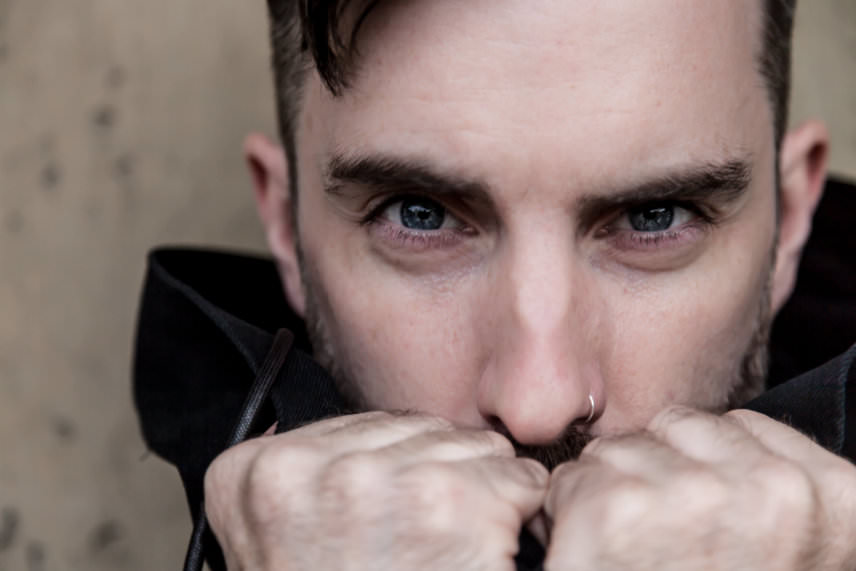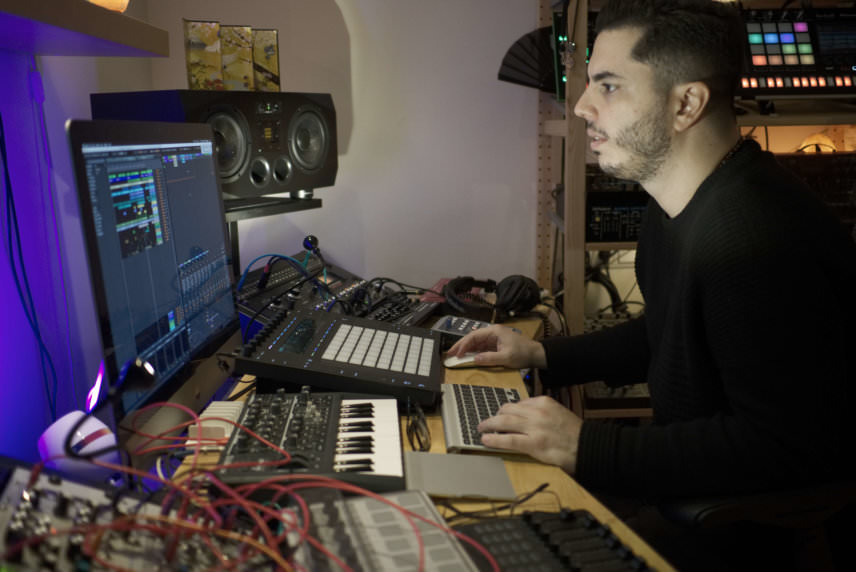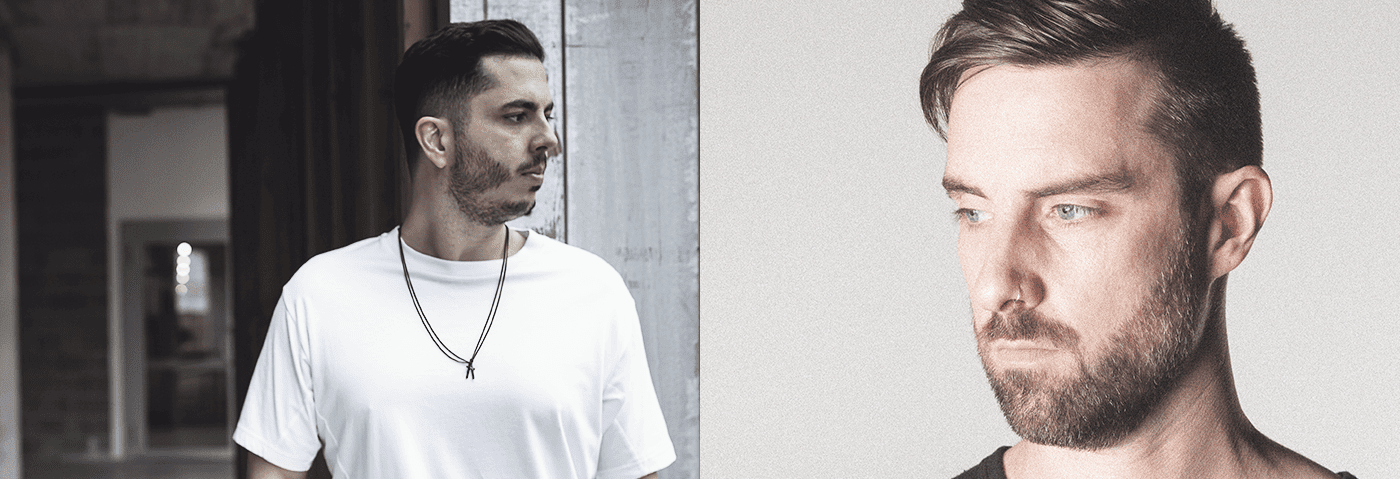Collaborating is rarely straightforward. Egos clash, ideas battle for supremacy and friendships are tested.
However, collaborating across time zones with someone you’ve never met comes with a unique set of challenges. With the release of their four-track Red Planet EP on Hotflush, SCB (the side project of Paul Rose aka Scuba) and Wehbba understand these challenges intimately.
It’s a meticulously produced EP, full of punch and power, which the pair created by sending bounced audio files back and fourth via email. We caught up with the veteran producers by phone for a candid discussion on the joys, benefits and pitfalls of remote working as well as producing in general. They also share their thoughts on how you can improve results next time you create a track.
Attack: What would you typically look for in a musical partner?
SCB: For me, it’s a question of trying to produce something together that you wouldn’t necessarily have produced on your own. Obviously, you’ve got to like the other person’s stuff…that’s a pretty important starting point! You need to feel like the finished piece will be more than the sum of its parts.
Wehbba: Look for a collaborative partner whose style you appreciate but perhaps you haven’t yet figured out their production techniques. When you send them the stems, see what they come up with. See what magic, style or new elements the person adds. I think that’s really essential to the process.
S: Ideally, you need to learn from each other. You take something out of it at the end of the day, rather than just the music, so learning is a big part of it.
W: It’s about sharing the experience and becoming a better producer.
S: And it’s definitely harder to get that from a remote collaboration, but you can still achieve it. It’s super interesting, like you just said. You get the parts and just dig into them. I’ve done collabs in the studio and sometimes it can be a bit inhibiting as people get a bit nervous. But when you’re left to your own devices, you can flex your creative muscle and simply send back whatever you’ve done. It’s a very open process.
W: Definitely. It overcomes that awkwardness. When you’re not that comfortable with someone, it can be really difficult to express yourself so it removes that obstacle from the equation.
Did you both discuss a concept beforehand?
S: The way we did these tracks, two of them were ideas I had. And the other were ideas Rodolfo had. I think that’s quite a good way to do it, rather than to plan things in advance. That’s generally how I’ll do it. Occasionally I’ll have an idea and run to the studio, but nine times out of ten, there isn’t a lot of conception behind it. It’s more like let’s just crack on!
W: I think with these four tracks it felt a lot like remixing each other on something that didn’t exist yet.
S: That’s a really good way of putting it.
W: We received the parts and neither of the tracks that we had worked on had been finished. So we arranged them individually and put them together at the end. It was basically a big remix project and for the most part it was improvised.
S: I think with any collaboration, it’s good to keep it as improvised as possible.
W: Creating musical boundaries is limiting. What you’re looking for is something new and different. If you set up a boundary and say, ‘oh you need to go there,’ it defeats the point. The right approach is to just go with the flow and learn from each other’s various approaches.
S: I think that’s particularly true when you’re working with somebody else. I find when I’m working by myself it’s helpful to set up parameters. But when you’re working with someone else, you need to keep it as open as possible. That’s how you learn.
Creating musical boundaries is limiting.
How did you design the workflow?
S: I think it’s useful to get experience working in different ways as a producer. For anyone starting out, that’s a useful thing to keep in mind: the more you switch it up and experiment, the more you learn.
W: In terms of the division of labour, I think it’s something that needs to go with the flow. You can’t say ‘you do this and I’ll do that for example’.

S: I think the crucial thing with any collaboration is to leave your ego at the door! If you find yourself headbutting the wall, where you’re like, ‘no, I want to do it this way’, you’ll never progress. If someone feels strongly about something and you don’t really care, then go with the strong suggestion. If you’ve got strong differing opinions and you’ve got a discussion to have, then you’ve got to have it in a constructive way. It’s a very interesting contrast to doing everything on your own. Obviously, most producers are hermits in their studio and used to ruling their own world. But you need to get used to compromise.
W: It’s also helpful to learn how to compromise when working solo. If you had the opportunity to collaborate with someone else, then you can apply what you learned to your own workflow. Sometimes you can get overly attached to a part you’ve written where you did some incredible sound design but then it doesn’t quite work in the mix. It’s always important to take a step back and take a view on the project as a whole. It’s about practicing detachment.
S: Yeah! I’ve got to keep this bit in! It’s the best bit! But it’s the bit that’s ruining the tune. [laughs]
W: Exactly!
How were you able to work through and beyond creative differences?
S: The way we did this was just really really minimal with very few emails and simply sending things back and forth, which seemed to work really well for us. Again, I think it’s different for everyone but for us this is what worked and its important to keep experimenting to find the sweet spot that suits all.
It depends on the nature of the relationship also. If you’re best friends and you’re collaborating, then it’s always going to be different. In that type of situation it could be easier, but there could also be some baggage. There are advantages and disadvantages working with someone you don’t really know. It’s completely subjective. In our situation it was really quite simple.
W: Yeah with us it was kept to the bare minimum, because I guess we were both on the same page in being open-minded with whatever the other person was doing. It does requires a lot of trust and more so as Paul and I haven’t met each other yet…!
S: This is the first time we’ve actually spoken to each other. [laughs]
W: That’s true! I had full trust on his side and I guess he had some trust on mine?! And that really contributes to the flow of the collaboration. Like you said, sometimes, even if it’s with your best friend it just won’t move forward because something small might not be working as you had hoped. But it wasn’t the case with this one. That’s why the communication was really simple.
It's always important to take a step back and take a view on the project as a whole. It’s about practicing detachment.
Sounds like it was straight sailing. Surely, you did disagree on something at some point?
S: When I work in the studio with someone else directly, I can be a control freak which is not constructive at all. I tend to like getting my own way all the time and I’m conscious of that and do try to rein it in. When I was younger and played in bands, I was awful for that same reason and I would tell everyone what to play. It was not ideal! That’s why I became a producer. But this was when I was much younger and I’ve mellowed now! So in this case, I’ve learned how to avoid disagreements as much as possible.
Have there been other examples in your careers where you overcame difficulties collaborating with someone else?
S: I’ve definitely had collabs that haven’t worked. Most people probably have and thats healthy. To be honest, you just have to say ‘this isn’t working’ and step away from it. If you’re in disagreement over something small then one side has got to give ground and that’s where compromise plays its part. But if it’s really not working, you need to be able to say, ‘yeah, fuck this, let’s do something else.’ I’ve definitely been in that situation before and you just have to hold your hands up and say ‘nope’ lets move on.

W: You’ve pretty much described my experiences as well [laughs]. I’ve had the same issues. I also left the band environment because I couldn’t take shit from other people and was always trying to tell other people what to do. When I became an engineer, I had to help people realise their vision whilst being a subtle creative guide. Being an engineer really helped me learn the balance of when to assist and when to back off. The good thing about collaborating is that you always keep learning. Even if you think you know it all, there are still some things you won’t know. It’s a constant learning curve.
How did you work around the issue of each using different DAWs?
S: This falls into the remix approach, as we’re using different software, I’m sure?
W: I was using Ableton for this.
S: Right. I was using Cubase so we’re literally bouncing audio back and forth, no project files, nothing like that. Just raw audio going back and forth. For some it’s probably a less than ideal way of doing things but we found it worked for us.
Ideally, you would send ProTools projects to each other and have the same plugins so that the session (hopefully) opens seamlessy both ends. However, the approach we had was probably helpful in some ways. At times it can be useful to have parameters and I think the restrictions we had enabled us to work freely and independently if that makes sense? That’s a pretty important techy point to make; a lot of people would be put off collaborating when they’re using different DAW’s, but you can totally do it. You just need to find a solution that works for you.
W: It’s actually somewhat inspiring to work that way because when you receive raw audio, you’re able to edit it in ways you wouldn’t normally. It’s different to receiving MIDI parts and plugin presets etc as you then pick up a session rather than start from scratch.
S: Yeah, you’re right. It changes your approach and gives you more freedom. It gets your brain working and poses the question, ‘how can I move around this?’
S: As you can’t just share project files, you need to bounce audio out. Ultimately, DAWs all do the same thing really, but it’s just a different set of key demands.
Obviously Ableton has its own plugins, but the bottom line is that they all work in broadly the same way, so there is no big obstacle to people doing it the way we did. It certainly would be easier to do it all in the one Ableton project, but as Rodolfo said, it can be useful to have to have that wall in between, which forces you to think slightly outside the box when you receive the audio from your partner.
SCB and Wehbba’s Red Planet EP is out now on Hotflush.
